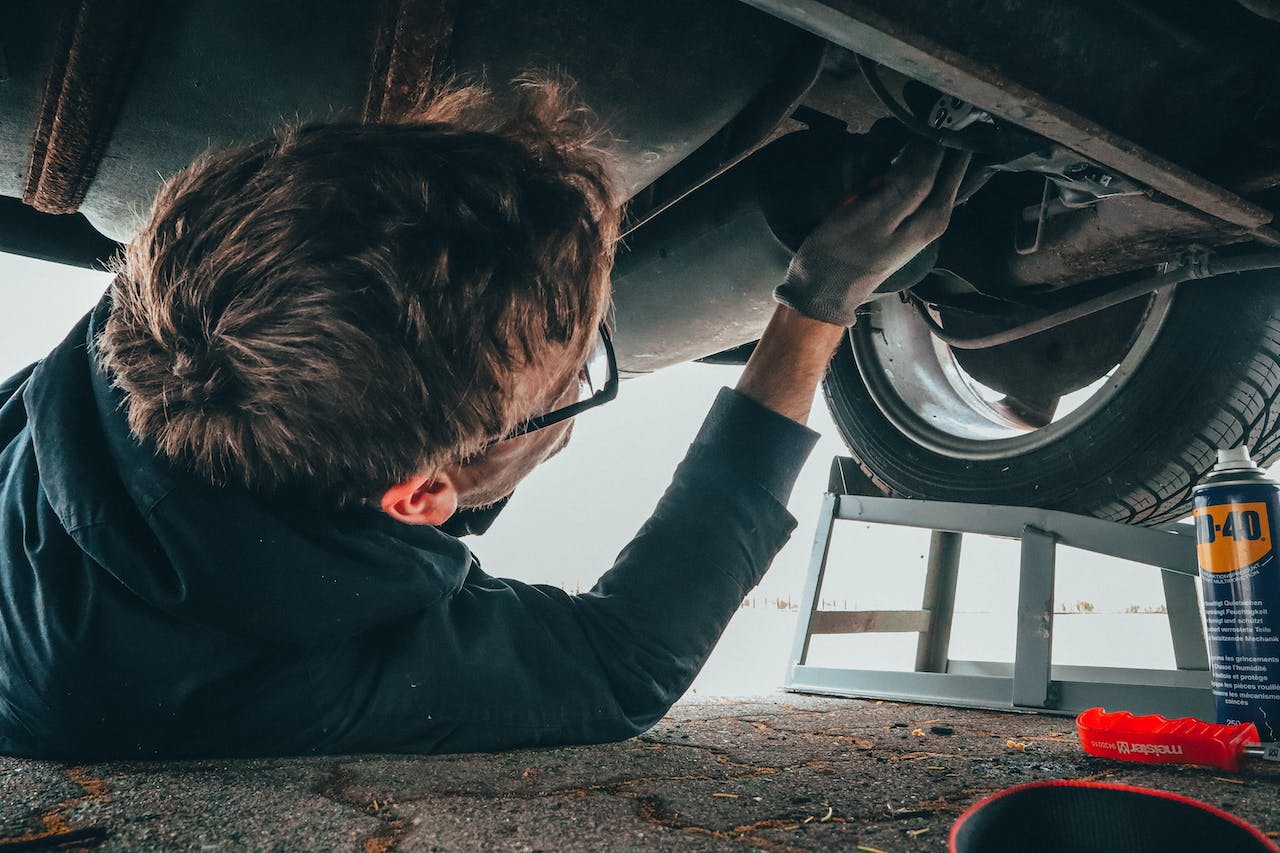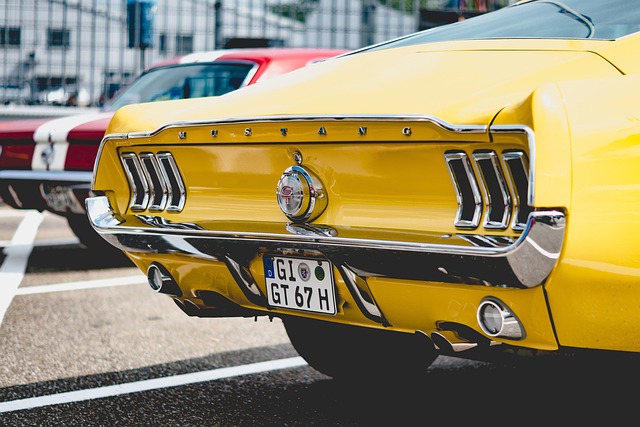Smog check failures tend to originate from issues with your car’s exhaust, emissions system, or engine sensors. For the most part, cars don’t pass if there’s something up with the catalytic converter, faulty oxygen sensors, or a damaged gas cap. Even minor leaks in the exhaust or a check engine light can do it. Dirty air filters or old spark plugs can cause increased emissions. Bad fuel systems or just plain worn out parts can make the car run badly, which means more pollution. These inspections catch any component that’s not working properly. To assist you in understanding what fails a smog check, the sections below discuss the primary culprits and offer advice on how to address them.
Key Takeaways
- Smog check failures are often caused by malfunctioning oxygen sensors, old catalytic converters, loose gas caps, evaporative system leaks, clogged air filters, bad ignition systems, and catalysts. All of these issues directly impact emissions and engine performance.
- Preventive care — oil changes, replacing worn parts, checking tire pressure — will minimize the chances of you failing an emissions test and keep your car running great.
- The “Check Engine” light is the canary in the coal mine for emissions issues, and pulling codes lets you make pinpointed repairs that will get you through a smog check.
- Taking a few simple steps before you get to the test station can make the difference between passing and failing a smog check.
- Fuel additives and recent battery changes that haven’t reset emissions monitors can help push your test results and get everything primed for inspection.
- If your vehicle fails the smog check, it’s important to review the inspection report, have the necessary repairs carried out at a certified repair facility, and schedule a re-test as soon as possible to get your vehicle back in compliance.
Why Your Car Fails
Smog check failures are usually the byproduct of ignored maintenance or defective components. Below are the most common reasons behind these failures:
- Faulty oxygen sensors
- Worn catalytic converters
- Leaking gas caps
- EVAP system leaks
- Dirty air filters
- Defective ignition systems
- Rich fuel mixtures
- Old engine oil
- Muffler issues
- Underinflated tires
- Cold engines during testing
- Check engine lights
Faulty Oxygen Sensor
A bad oxygen sensor typically results in low gas mileage, a rough idle and even the ‘Check Engine’ warning. Older sensors just wear down from heat and gunk, particularly after high mileage. If not replaced, they can send bad data to the engine computer causing it to emit excessive emissions that directly fail a smog check.
Worn Catalytic Converter
If your catalytic converter is clogged or damaged, it can’t process harmful gases effectively. You may experience a reduction in engine power, or an odor like rotten eggs. Engine misfires accelerate the wear, and aftermarket converters can fail within three to five years. Swapping them out is essential for compliance, particularly if your ride is older or customized.
Leaking Gas Cap
Gas caps that don’t seal properly let fuel vapors escape, increasing emissions. Even a minor drip can illuminate a warning on the dashboard. Checking and tightening or replacing the cap is a quick fix that keeps emissions in check and avoids failed tests.
EVAP System Leaks
Leaking EVAP systems, which handle fuel vapors, fly under the radar, but they increase emissions. Fuel odors or check engine lights can suggest issues. Just check for worn purge valves and hoses and make quick repairs to nip problems before testing.
Dirty Air Filter
A clogged air filter restricts airflow, raises emissions and reduces engine power. Routine checks and replacement not only boost fuel economy, but aid in passing smog checks. Air quality goes straight to emissions, so you want a clean filter.
Defective Ignition System
Misfiring spark plugs or bad ignition components raise hydrocarbons in exhaust. Symptoms are rough idling and poor acceleration. Regular tune ups and part replacement keeps that system happy and emissions low.
Rich Fuel Mixture
More fuel in the mixture = more unburned hydrocarbons in the tests. Black exhaust smoke indicates this. Checking sensors, injectors and adjusting fuel settings more than helps lower emissions.
The Check Engine Light
The check engine light is an indication that your car’s onboard computer, known as the OBD-II system, has detected an issue. This light isn’t a minor caution, it informs you of an engine issue or, more frequently, an issue with components associated with the emissions system. Most places, everywhere, have regulations that require cars to pass a smog check to keep the air clean. If your check engine light is on during this test, your car fails, regardless of everything else working great. This can be stressful for a lot of folks, because one little light could signify a minor thing or a huge, expensive repair.
The means to uncover what’s ailing is to screech the DTCs from your car’s OBD-II! During a smog check, a technician taps a scanner in to retrieve these codes. Each code indicates a specific issue, like a malfunctioning oxygen sensor, a loose gas cap or a damaged catalytic converter. Other issues are more basic and affordable to repair, such as tightening or replacing the gas cap. Others, such as swapping out a catalytic converter, can be simply time-consuming and costly. Either way, disregarding this light can cause you more trouble. You could notice your car consume more fuel, run rough, or even sustain damage over time.
When that check engine light glows, it’s a good idea to take care of it prior to your next smog check. Just solving it won’t do, though. Post repair, you’ll want to drive the vehicle for a minimum of 50 to 100 miles, so the OBD-II can complete its checks and clear the codes. If you walk into a smog test without doing so, the car might not pass, because the system may still hold on to the trouble codes.
It’s dangerous to ignore your check engine light. It might mean easy repairs, but it might conceal more serious issues that damage your car’s performance and pollute the air.
Beyond The Engine Bay
A smog check isn’t just a tailpipe gas scan—it’s a comprehensive evaluation of how effectively your vehicle’s systems function in unison to maintain low emission levels. Keeping the car road-worthy requires maintenance, not just patching. Routine maintenance ranges from oil, filters, tires and electronic systems – all with an immediate effect on emissions. The following table illustrates key maintenance practices crucial for optimal smog test results:
| Maintenance Task | Frequency | Impact on Emissions |
| Oil Change | Every 8,000–12,000 km | Reduces HC, CO, NOx |
| Air Filter Replacement | Every 20,000–24,000 km* | Lowers HC, CO, NOx |
| Spark Plug Replacement | 48,000–160,000 km** | Improves combustion |
| Tire Pressure Check | Monthly | Enhances fuel efficiency |
| Battery Inspection | Annually or as needed | Ensures system readiness |
| *Reference owner’s manual and driving conditions. | ||
| **Dependent on spark plug type and vehicle use. |
Old Oil
Old engine oil is highly contaminated and increases the HC, CO and other pollutants. When oil is dirty, it can’t lubricate engine parts well, causing incomplete combustion and more emissions. It’s a frequent cause of smog check failures.
Change oil regularly, at the manufacturer’s mileage/time intervals. Regularly check oil level and quality – watch for dark, thick or gritty oil, all indications that it’s time to change. Regular oil changes keep your engine clean on the inside and help reduce emissions for a passing smog test.
Low Tire Pressure
Low tire pressure makes your engine work harder, and produces more emissions. Not only does bad tire pressure increase fuel use, but it impacts the emission control systems as well. Pumping up your tires to the suggested PSI—typically indicated on the driver’s door or owner’s manual—prior to a smog check helps.
Periodic adjustments work. Good tire pressure is not only important for safety, it prolongs tire life. Mind you, it’s a minor move with a significant impact on general engine health and emission management.
Recent Battery Change
A new battery can reset a car’s on-board diagnostics, erasing system readiness data. So after a battery change, your car’s computer has to wait to recheck emission controls. If you haven’t done a complete drive cycle (roughly 100–200 miles), it will say ‘not ready’ and you will get an automatic smog check failure.
Check for any warning lights after you switch the battery. If so, deal with them prior to testing. A 15 – 20 minute run and a few days of driving will make sure sensors and monitors give the emissions data.
How To Prepare
A little preparation can go a long way in passing a smog check. A checklist helps you cover all bases: ensure your vehicle is warmed up, fluids are at the right levels, and key systems are checked for faults. A pre-test courtesy check can catch issues like worn spark plugs, dirty air filters or loose gas caps. Check the engine light—if it’s on, you can kiss it goodbye. Routine care, such as tune-ups and oil changes, keeps your car running within emissions guidelines. Bring previous inspection reports to the exam for reference if necessary.
Drive First
It’s important to drive the car for at least 15–20 minutes prior to the emissions test. The engine and catalytic converter have to warm up to operating temperature to incinerate hydrocarbons. Engines emit more pollutants when cold, and a system that’s thoroughly warmed up gives a more precise test score. Repair and drive 100–200 miles for the OBD-II to reset and test all emissions systems. A complete drive cycle — where the engine heats up, cools, and runs at varying speeds — allows all sensors to perform self-tests. Because a vehicle tested immediately after starting can generate elevated emissions and false readings, avoid taking short trips when you’re heading into the test center. Cars that recently cleared their codes but didn’t get enough driving may show ‘not ready’ status, which commonly causes test postponements or flunks.
Check Fluids
Check all essential fluids before the test: engine oil, coolant, and transmission fluid. Low oil or coolant can increase engine temperatures and impact combustion, resulting in increased emissions. Keeping fluids topped off promotes engine efficiency and helps keep emissions within legal limits. You don’t necessarily need an air filter change before a smog check, but a clogged filter can increase emissions. Don’t switch the oil just for the test if it’s not time–old oil only affects emissions if it’s really dirty or contaminated.
Plan fluid checks into your maintenance schedule. Regular maintenance minimizes the chance of doom from avoidable causes. Even minor oversights can trigger test flunking.
Use Additives
Fuel additives do come to the rescue by cleaning fuel injectors and reducing carbon in the engine. Select an emissions-lowering additive and follow label directions. Additives are most effective when used a week or two in advance of the test, allowing time for the cleansing process. More complete combustion reduces emissions, but your mileage will certainly vary based on the condition of the car.
Certain drivers observe a variance from these products whereas others experience minimal change. Additives are not a solution for serious issues, but they can assist if your car is otherwise running well.

The Inspection Process
A smog check, or emissions inspection, is an organized procedure to determine how much pollution a vehicle emits. Understanding the process can prepare you for the exam and decrease the likelihood of a failed outcome. The inspection isn’t just a cursory glance, it’s an in-depth report that evaluates both the mechanical and electronic condition of your car.
- The inspector checks your bike’s identity, registration, and might request previous inspection reports. This step confirms that the car is testable and has a recorded history that aligns with the documentation.
- An emissions inspection visually inspects for the presence and condition of emissions control equipment, such as the catalytic converter, EGR valve and oxygen sensor. That missing or obviously damaged parts almost always equals a failed test.
- If your model year is ’96 or newer, the technician plugs in an On-Board Diagnostics (OBD) scanner to the car’s computer. The OBD scan brings fault codes and verifies if emissions-related monitors have run. Any active “Check Engine” or “Service Engine Soon” lights cause it to immediately fail in multiple areas, including California.
- Certain inspections consist of a tailpipe emissions test in which a probe measures exhaust gases while the engine is idling then running at higher speeds. High hydrocarbons, carbon monoxide, or nitrogen oxides means you have issues with your air/fuel mix or ignition system.
- Gas cap – to see if vapors are sealed in the fuel system. Leaks here can leak noxious gases and fail.
It’s clever to hear that cars with new repairs should be driven 100-200 miles before the test. This provides the engine’s sensors a chance to reset and allows the OBD system time to inspect all of the components. Routine tune-ups—oil, air, plugs—can head off a lot of breakdowns. Typical reasons that cars fail are a defective oxygen sensor, a dirty air filter, misfiring plugs, or a vacuum or exhaust leak.
If your car flunks, they usually give you a free retest within something like 30 days at the same station. In certain areas, sinking a specific sum into fixing your property might get you a temporary pass. Emissions system parts are typically warranted for two years or 38,000 km so that assist with repair expenses.
After A Failure
A failed smog check signifies your car wasn’t ‘clean’ enough, as per local law. These are the next steps for solving the issue and remaining road-legal. Read the inspection report immediately to know what parts or systems failed. Watch for high emission read outs, a check engine light or bad sensors. Others will flunk a car immediately if the check engine light is lit, so that’s an easy one to detect. The report will itemize what repairs are necessary to pass.
Book repairs with an authorized smog repair shop. Shops with experience in emissions systems can identify and repair issues such as failing oxygen sensors, aging spark plugs or a plugged air filter. If your car has driven more than 130,000 km, request that the shop test the oxygen sensors. These wear out over time and can screw up the emissions system. Once fixed, oil changes and tune-ups count. More failures is what you get when you skip these.
Before a retest, just drive the car in normal traffic for 80–160 km to allow the system to reset. This causes the sensors to retrain and display the correct information during your next check. Or if you recently completed major fixes, or reset the codes, drive more–100-200 miles is safer. Prior to your next smog check, give your car a 15–20 minute drive to warm up the engine. This assists in burning off excess hydrocarbons and provides an accurate reading.
Look for warning signs prior to the next check. If the car runs rough, stalls, or has a warning light, repair it early. Small steps, like changing the air filter or checking fluid levels, can prevent bigger problems. Well tended cars are less likely to bomb. Most deaths are from ignored maintenance or missed warnings.
Conclusion
Smog checks trip up drivers for dumb reasons. A loose gas cap, worn spark plugs or check engine light can kill a test fast. Bad sensors or dirty filters tack onto the list. Even vacuum leaks or old oil contribute. Shops are looking for actual problems, not nitpicky stuff. Most repairs require simple tools and a little time. New parts or a tune-up usually take care of it. To keep your car running clean, check these parts before the test. Fast check = less time, less stress. Understand your car’s needs and get a jump on repairs. Need additional advice or assistance on your upcoming check? Contact or leave your questions in blog comments.
Frequently Asked Questions
1. What are the most common reasons a car fails a smog check?
Most often it’s a lit check engine light, bad oxygen sensors, old spark plugs or a bad catalytic converter. These problems raise emissions and don’t cut it.
2. Does a check engine light automatically cause a smog check failure?
Yeah, if the check engine light comes on in the test, the car fails. The light indicates an emissions issue that needs to be repaired before resubmission.
3. Can issues outside the engine cause a smog check failure?
Yes, things like a broken gas cap, exhaust leaks, or fuel system issues can cause failure. All emissions-related components are inspected.
4. How can I prepare my car to pass a smog check?
So does regular maintenance. Change the air filter, repair leaks, make sure your gas cap seals and don’t skip warning lights. A car that’s been taken care of is more likely to pass.
5. What happens during a smog inspection?
Technicians measure your car’s emission levels, inspect the exhaust system and perform on-board diagnostics. The test ensures your car conforms to local emission standards.
6. What should I do if my car fails a smog check?
Go over your inspection report and locate the reason. Fix them, then try your car again. Certain regions provide help or waivers for expensive repairs.
7. Can I drive my car after failing a smog check?
This varies by local regulations. Generally, you’re allowed to drive for a short period, but have to repair and retest to re-register. ALWAYS check your region’s requirements.
Need a Smog Check in California? Trust autoTECH Blackhawk for Expert Service
Experience the excellence of autoTECH Blackhawk when it comes to handling your California Smog Check. Why trust us with your inspection needs? Our standout feature is an unwavering dedication to building strong relationships with our clients, an essential part of keeping your vehicle compliant and running clean. This commitment shapes our tailored approach, ensuring every inspection aligns with your specific goals for performance, efficiency, and peace of mind on the road.
Whether your registration renewal requires a smog check, you’re concerned about emissions test results, or you simply want expert guidance on staying compliant with California standards, autoTECH Blackhawk is here to exceed your expectations. We proudly back our work with an industry-leading 3-year / 36,000-mile warranty on related repairs and use only high-quality, manufacturer-recommended parts when service is needed.
Don’t wait until a failed test disrupts your plans—contact our friendly team today to schedule a convenient, contactless smog check appointment!


